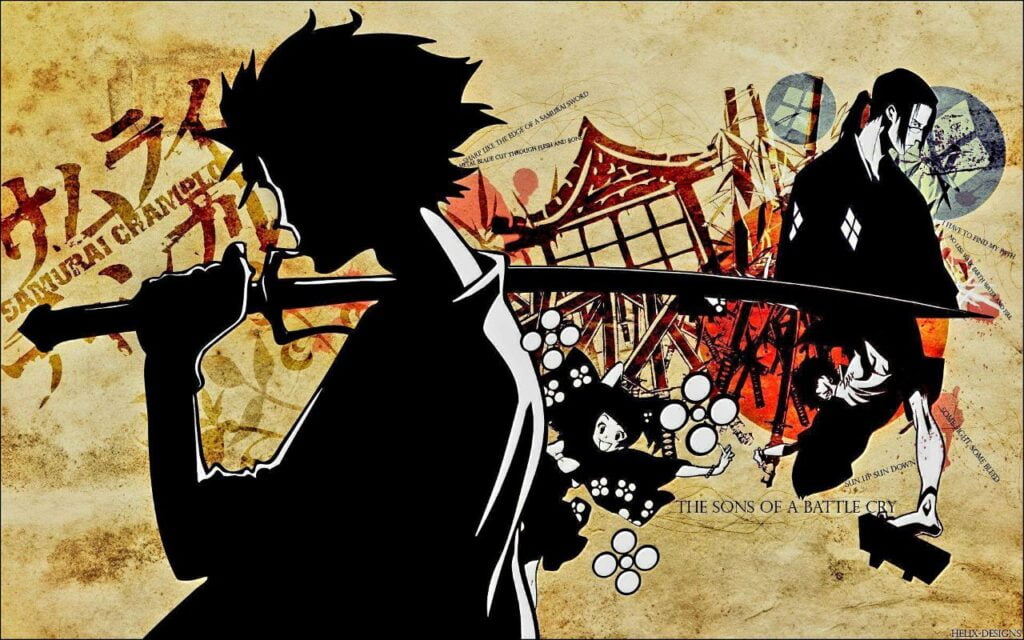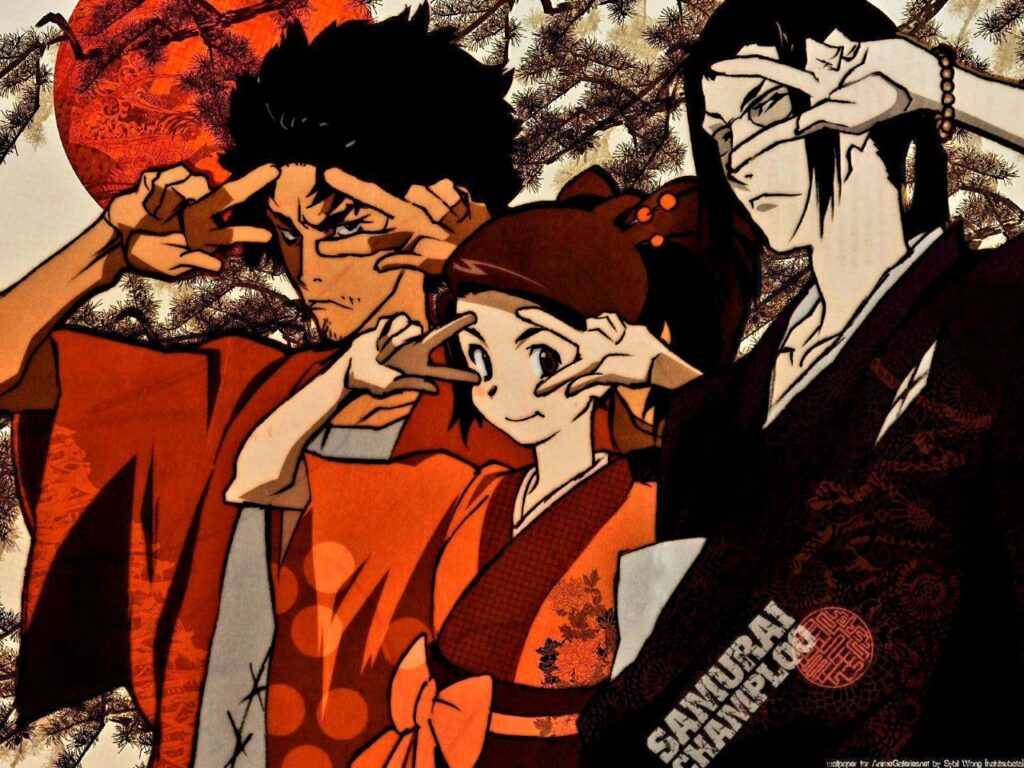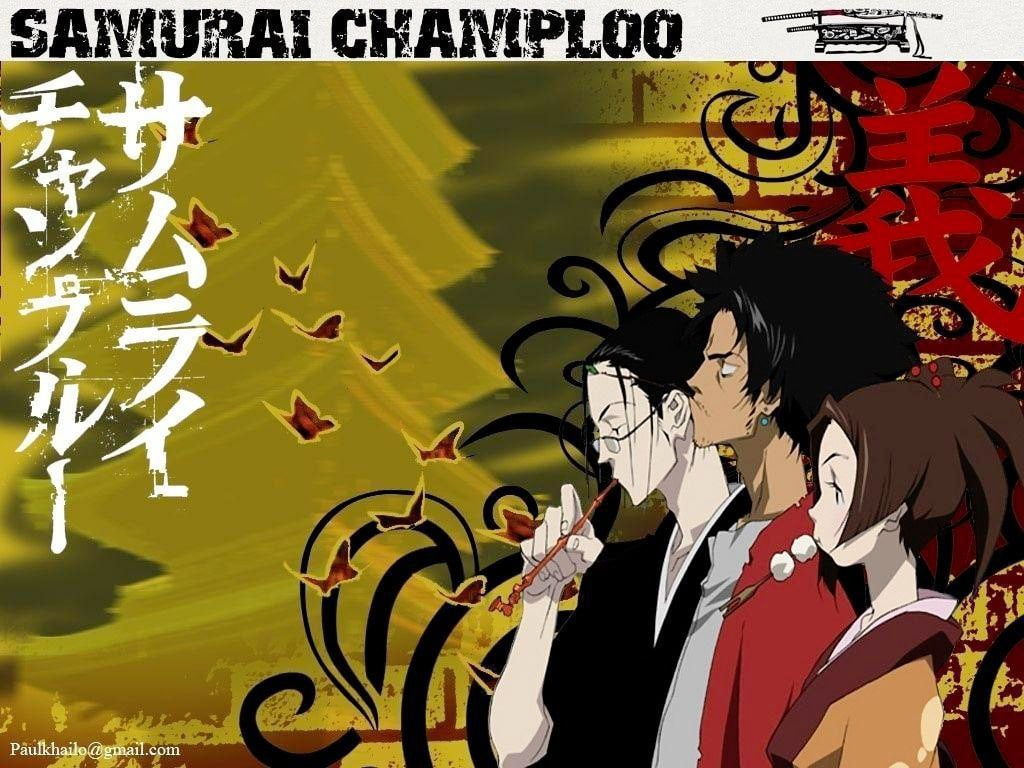
Introduction:
“Samurai Champloo” stands as a landmark in the realm of anime, seamlessly blending historical fiction with hip-hop culture in a way that captivates audiences even years after its initial release. Created by Shinichirō Watanabe, renowned for his work on “Cowboy Bebop,” this anime series takes viewers on a journey through the Edo period of Japan, following a trio of unlikely hip-hop culturecompanions as they navigate a world of honor, violence, and self-discovery. With its unique animation style, compelling characters, and an eclectic soundtrack, “Samurai Champloo” continues to resonate with audiences around the globe.
A Fusion of Styles:
One of the most distinctive aspects of “Samurai Champloo” is its fusion of disparate elements – blending traditional samurai storytelling with modern hip-hop culture. Set in the Edo period, the series follows Mugen, Jin, and Fuu, three travelers brought together by fate. Mugen, a brash and unpredictable swordsman with a wild fighting style, contrasts sharply with Jin, a reserved and disciplined ronin skilled in traditional swordsmanship. Fuu, the spirited young girl who brings them together, serves as the catalyst for their adventures.
What sets “Samurai Champloo” apart:
What sets “Samurai Champloo” apart is its incorporation of hip-hop culture into its historical setting. From the opening theme, which features an infectious hip-hop beat accompanied by traditional Japanese instruments, to the graffiti-inspired interludes between scenes, the series seamlessly integrates elements of hip-hop into its visual and auditory aesthetic. This fusion extends to the character designs, dialogue, and even the choreography of the fight scenes, creating a truly unique viewing experience that appeals to fans of both anime and hip-hop culture.
Character Depth and Development:
At the heart of “Samurai Champloo” are its three main characters, each with their own distinct personality and motivations. Mugen, with his untamed demeanor and unconventional fighting style, embodies the spirit of chaos and rebellion. Jin, on the other hand, is the epitome of discipline and honor, a skilled swordsman with a mysterious past. Fuu serves as the glue that holds the group together, providing both comic relief and emotional support as they journey across Japan in search of the enigmatic “samurai who smells of sunflowers.”
Throughout their travels, the trio encounters a colorful cast of characters, each with their own story to tell. From rival samurai and corrupt officials to wandering musicians and vengeful assassins, the world of “Samurai Champloo” is rich with intrigue and conflict. It is through these encounters that Mugen, Jin, and Fuu are forced to confront their own beliefs and values, ultimately growing and evolving as individuals.

Themes of Identity and Freedom:
At its core, “Samurai Champloo” is a story about identity and freedom – about breaking free from the constraints of society and forging one’s own path in life. Each of the main characters grapples with their own sense of self and purpose, struggling to reconcile their pasts with their present circumstances. Mugen, a vagabond with no allegiance to anyone or anything, embodies the concept of freedom, living life on his own terms despite the consequences. Jin, burdened by his samurai code of honor, seeks redemption for past sins while striving to find meaning in a world consumed by violence.
Fuu, meanwhile, represents the innocence and optimism of youth, yearning for adventure and excitement beyond the confines of her mundane existence. Together, the trio embarks on a quest that takes them to the farthest reaches of Japan, encountering danger and adversity at every turn. Yet, through it all, they remain steadfast in their determination to carve out their own destinies, unbound by the expectations of society.
The Legacy of “Samurai Champloo”: More than a decade since its original airing, “Samurai Champloo” continues to be celebrated by fans and critics alike for its groundbreaking approach to storytelling and its enduring influence on the anime industry. Its bold fusion of historical drama and contemporary culture has inspired countless imitators but has yet to be equaled in terms of its creativity and originality.
From its memorable characters and stylish animation to its unforgettable soundtrack and thought-provoking themes, “Samurai Champloo” remains a timeless classic that transcends genre boundaries. Whether you’re a fan of samurai epics, hip-hop music, or simply compelling storytelling, this anime has something for everyone.

conclusion:
In conclusion, “Samurai Champloo” stands as a testament to the power of artistic experimentation and creative collaboration. By daring to defy convention and merge disparate elements into a cohesive whole, Shinichirō Watanabe and his team have crafted a masterpiece that continues to resonate with audiences of all ages and backgrounds. As we look to the future of anime, “Samurai Champloo” serves as a shining example of what can be achieved when artists are willing to push the boundaries of their medium and explore new artistic frontiers.
FAQ:
1. What is “Samurai Champloo”? “Samurai Champloo” is an anime television series created by Shinichirō Watanabe, known for his work on “Cowboy Bebop.” It combines elements of historical fiction set in Japan’s Edo period with modern hip-hop culture, creating a unique and captivating viewing experience.
2. When was “Samurai Champloo” released? The series originally aired in Japan from May 2004 to March 2005. It has since gained international popularity and has been released on various streaming platforms and home media formats.
3. What is the premise of “Samurai Champloo”? The story follows Mugen, Jin, and Fuu, three travelers brought together by chance. Mugen is a wild and unpredictable swordsman, Jin is a disciplined and skilled ronin, and Fuu is a spirited young girl. Together, they embark on a journey across Japan in search of the “samurai who smells of sunflowers.”
4. What makes “Samurai Champloo” unique? “Samurai Champloo” is known for its fusion of traditional samurai storytelling with elements of hip-hop culture. This blend is evident in its animation style, character designs, dialogue, and soundtrack, creating a visually and audibly distinct experience.
5. Who is the creator of “Samurai Champloo”? The series was created by Shinichirō Watanabe, a prolific anime director and producer. Watanabe is also known for his work on other acclaimed anime series such as “Cowboy Bebop” and “Space Dandy.”
6. What themes are explored in “Samurai Champloo”? The series delves into themes of identity, freedom, and redemption. Each of the main characters grapples with their own sense of self and purpose as they navigate the complexities of feudal Japan.
7. Is “Samurai Champloo” suitable for all ages? While the series contains action-packed scenes and mature themes, it is generally suitable for older teenagers and adults. Viewer discretion is advised due to violence, language, and suggestive content.
8. How has “Samurai Champloo” influenced the anime industry? “Samurai Champloo” has had a significant impact on the anime industry, inspiring other creators to experiment with unconventional storytelling techniques and genre mashups. Its innovative approach to blending historical drama with contemporary culture continues to resonate with audiences worldwide.
9. Is there a sequel or spin-off to “Samurai Champloo”? As of now, there is no official sequel or spin-off to “Samurai Champloo.” However, the series remains popular among fans, and there have been occasional discussions about the possibility of continuation or adaptation in other forms of media.
10. Where can I watch “Samurai Champloo”? “Samurai Champloo” is available for streaming on various platforms, including Crunchyroll, Hulu, and Funimation. It is also available for purchase on DVD and Blu-ray for those who prefer physical media.